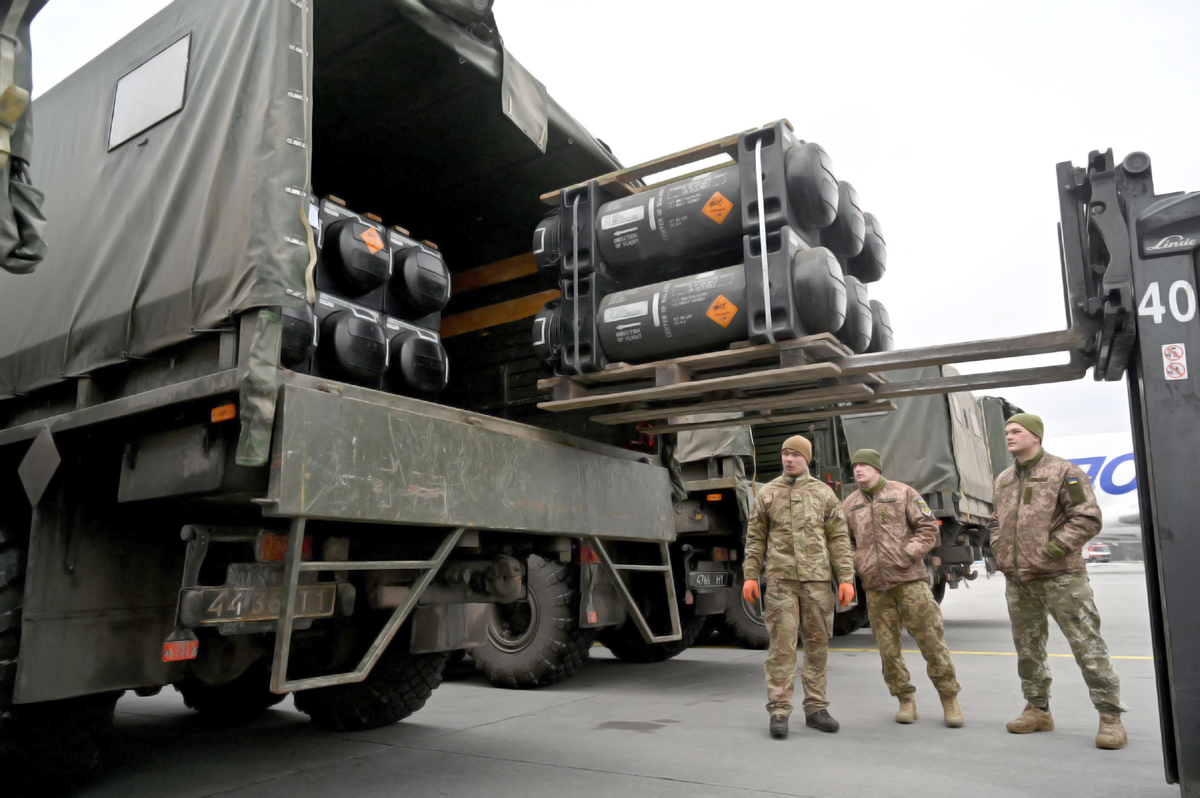By Syed Zain Ul Abideen
Ukraine’s demand for arms has been steadily increasing, posing potential challenges for the suppliers in the near future, especially the South African companies that have been providing substantial quantities of arms. Despite the significant supply, the demand continues to rise, making it difficult for these companies and countries to cope, particularly with the surge in fuel prices and manpower requirements in Ukraine. Moreover, delays in supplying the required arms have arisen due to limitations in factory manufacturing capacity and the need for government approval on finance, as Ukraine expects all defense supplies to be provided free of cost. According to data from the Keil Institute up until the end of May, the amount of military aid provided to Ukraine amounted to 104 billion US dollars. However, the demand from Ukraine exceeds this figure. The largest contributors to this aid are the USA with 46.56 billion, followed by the EU with 29.84 billion, Germany with 8.15 billion, the UK with 7.15 billion, Poland with 3.26 billion, the Netherlands with 2.7 billion, Denmark with 1.71 billion, Canada with 1.63 billion, Sweden with 1.62 billion, and Finland with 1.21 billion. Additionally, a recent announcement by the US revealed a fresh military aid package for Ukraine valued at a maximum of $500 million. As part of this assistance, the US has confirmed its intention to supply cluster munitions, a decision that has raised concerns among certain NATO allies.
Furthermore, France is set to contribute to Ukraine’s defense by providing missiles similar to the UK’s Storm Shadow missiles, which were recently delivered. These developments indicate an increase in international support to bolster Ukraine’s military capabilities amidst ongoing tensions in the region.
TANKS
Dozens of tanks have already been committed. However, Ukraine still says that they urgently need some more to defend its territory and to push out Russian troops. In response,
- The US is sending 31 of its Abrams tanks (Announcing the US decision, President Joe Biden described them as “the most capable tanks in the world”. The US plans to begin training Ukrainian soldiers to use the tanks promptly, but the exact delivery timeline for the tanks remains uncertain. However, reports in the US media indicate that Ukrainians are expected to complete their Abrams tank training by the end of summer, which roughly aligns with the anticipated delivery schedule. )
- The UK is providing 14 Challenger- 2 tanks (The Challenger 2 was built in the 1990s, but is significantly more advanced than other tanks available to Ukraine’s armed forces.)
- Germany is providing 14 Leopard- 2 tanks (The Leopard -2 is used by a number of European countries, and is considered to be easier to maintain and more fuel-efficient than most other Western tanks.)
- Spain says it is also sending six of its Leopard- 2 tanks.
- Ukraine used Warsaw Pact designed T-72 tanks prior to the invasion, and since February 2022 has received more than 200 T-72s from Poland, the Czech Republic and a small number of other countries.
COMBAT VEHICLES
Military professionals emphasize that achieving success on the battlefield demands a comprehensive array of equipment, coordinated deployment, and adequate logistical support. As part of the support to Ukraine, the US has donated 90 Stryker armored vehicles to bolster their capabilities.
AIR DEFENSE
Throughout the conflict, Ukraine has employed Soviet-era S-300 surface-to-air systems to counter Russian attacks. Prior to the conflict, Ukraine possessed approximately 250 S-300s, and efforts were made to replenish these with comparable systems from other former Soviet countries, including some from Slovakia. In addition to the S-300s, the US has contributed NASAMS (National Advanced Surface-to-Air Missile System) to Ukraine, with the first delivery taking place in November. The UK and Germany have also provided air defense systems, such as the Star streak and IRIS-T, each offering unique capabilities in countering low-flying aircraft and approaching missiles. Notably, the US and various European countries have dispatched long-range rocket launchers, including the M142 High Mobility Artillery Rocket System (HMARS), which played a vital role in Ukraine’s successful pushback against Russian forces in the south, particularly in Kherson in November 2022.
THE STRATEGIES
The adopted strategy by the USA to support Ukraine against Russia was anticipated by many writers worldwide, including the Interaction desk. However, Russia’s behavior appears to follow a similar strategy to that of the USA and its allies. While Ukraine has several allies, with the USA taking the lead, it seems that both the USA and Russia aim to prolong the war.
Russia’s reasons for this could be its limitations in manpower to occupy Ukrainian territory, a desire to minimize Russian casualties, and an intention to exhaust USA’s resources, including fuel. On the other hand, the USA benefits from having multiple allies who can support its resources in this conflict. There’s a possibility that Russia’s actions might extend the drama of the revolt to other European countries supporting Ukraine. As both rivals prepare for a long war for their respective reasons, the rest of the world is under stress due to the escalating involvement of allies on both sides. Countries like Pakistan find themselves in a difficult position, as the war started while its Prime Minister was in Moscow, and now the Foreign Minister of Ukraine’s visit adds to their complexities. The outcome of this ongoing conflict remains uncertain, and the world watches anxiously as the situation unfolds.
The author is analyst & Media Coordinator at Rabita Forum International.


